Meet the great tigerfish. It's considered one of the most feared and dangerous freshwater fish in the world. 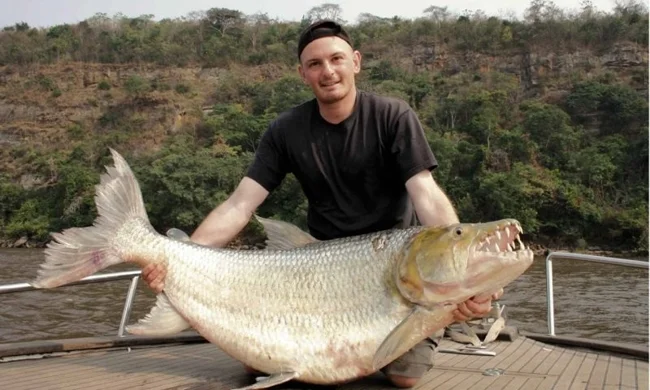
$6,000. That's how much it costs to try your luck and test your fishing skills for one of the most dangerous fish in all of Africa – the goliath. Your half a million won't guarantee a good catch: after all, retrieving this massive predator with dagger-like teeth from a turbulent river is not for the faint of heart. Moreover, if you fail, you risk becoming the prey yourself. A Goliath can easily bite through a metal leash. Can you imagine what this predator would do to your hands? 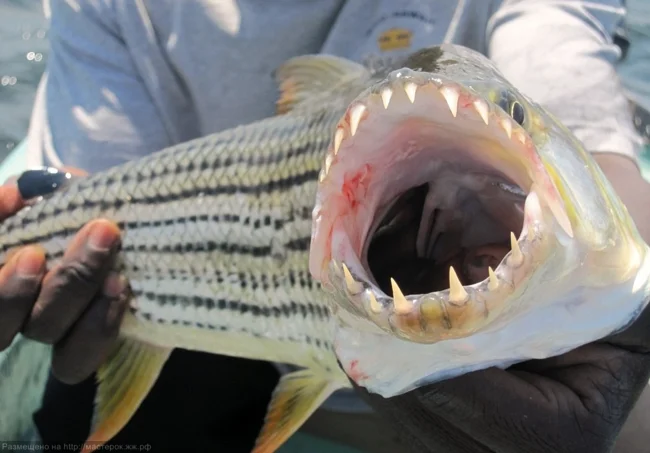
The photo shows a very young specimen. 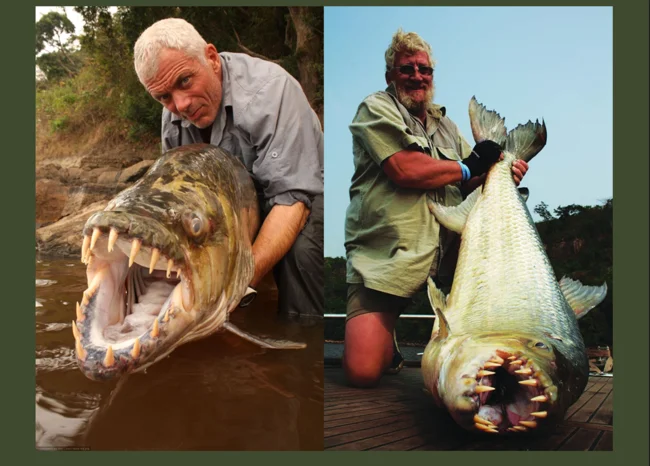
And here are the adult giants.
The goliath fish, giant hydrocyne, mbenga, or big tigerfish is not an overgrown pike; it's a monster of a completely different caliber. A full-grown mbenga ranges in length from 1.5 to 2 meters, and can weigh up to 80 kilograms – the same as an average adult man. Therefore, landing one ashore is not only extremely difficult: the goliath fish is considered one of the most difficult sport fishing trophies ever! 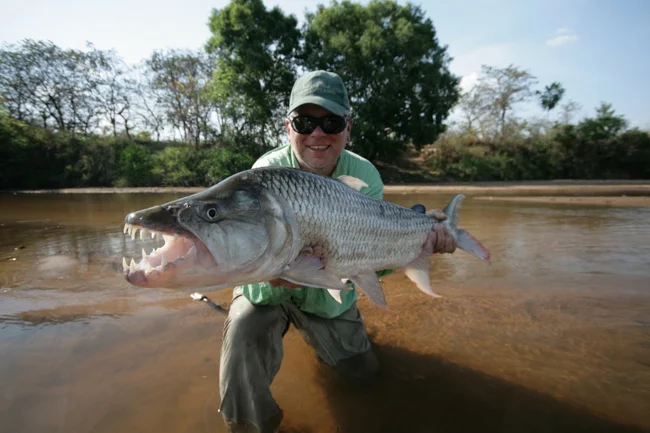
To land a goliath fish, you'll need a whole team, consisting of more than just fishermen. First, you'll need to hire pilots and at least one driver to take you to Central Africa, to the Congo Basin. Then you'll need a local guide to help you avoid deadly crocodiles, six-meter pythons, and electric catfish, and take you directly to the goliaths' habitat. Only then will your team of experienced people, equipped with the most durable fishing gear you can get your hands on, step in. And remember, none of this guarantees success. 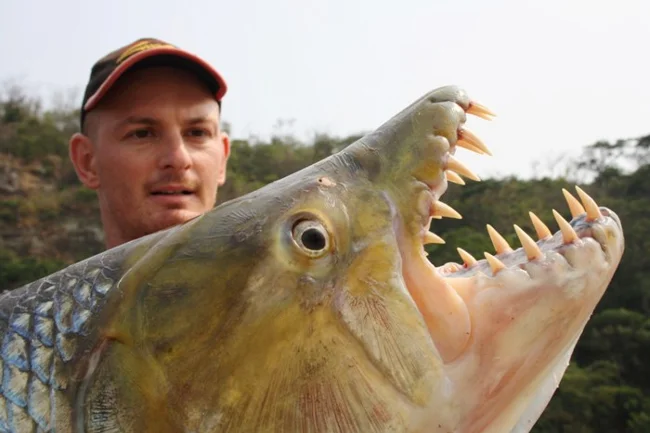
Oops, there's a horror movie poster!
After all, the hydrocyne isn't just big; it's also a damn muscular fish. The scaly-sided fish inhabits fast-flowing channels and has adapted since childhood to resist the constant, exhausting current of water. Therefore, in a one-on-one fight, it can simply snatch the fishing rod from the hands of an unlucky fisherman and leave the battlefield with a trophy. Or it can completely chew through the tackle, even if you're trying to fish it with a wire. 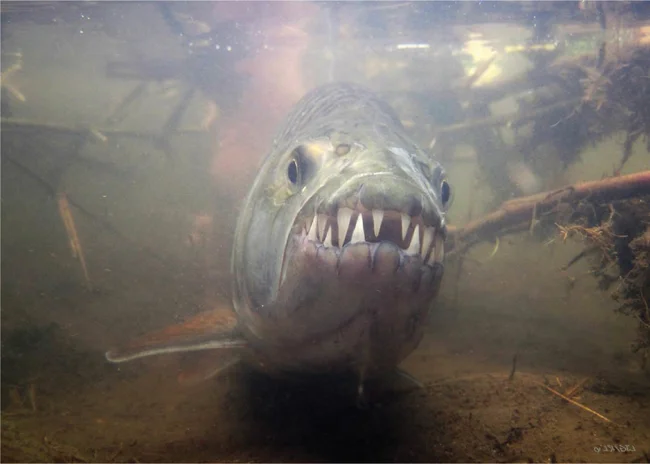
Hello, are you back for your fishing rod?
After all, its teeth are something scary. Thirty daggers up to 2.5 centimeters long protrude from its mouth, turning it into the perfect deadly trap, capable of snapping a catfish, bones and entrails in half. And if that's not enough, hidden inside its throat is another set of teeth, more reminiscent of a shark's. They are perfect for cutting meat and fishing line. 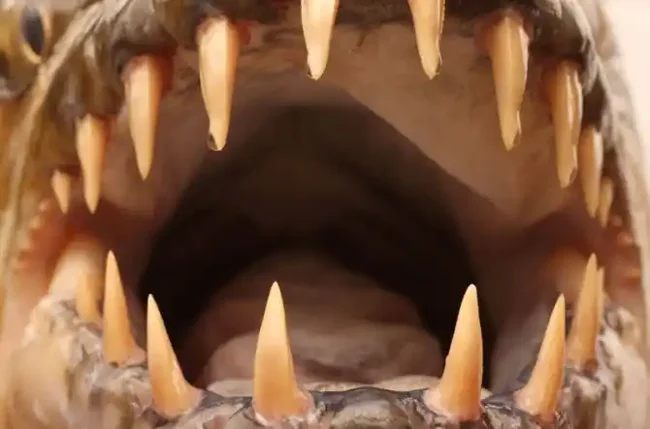
The teeth are shaped perfectly for hunting large fish. 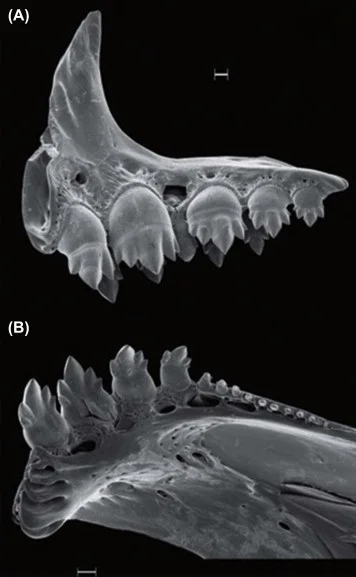
And these grinding teeth are located deep in the fish's throat, preventing anything from escaping!
And even if you manage to drag a goliath onto dry land, that doesn't mean you've won. It doesn't even guarantee you're the hunter. Although Mbenga feed primarily on fish, they don't really care what they eat. Small crocodiles, toothy relatives, or the fingers of an unlucky fisherman are all perfectly acceptable. And it would be rather embarrassing if a person spent half a million only to receive several deep lacerations that would require urgent stitches from a local surgeon. 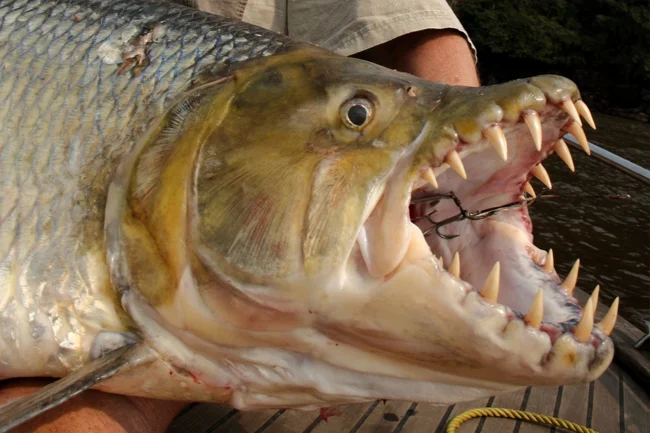
What surgeonfish?! I'm the only surgeonfish in all of Central Africa!
However, despite all the difficulties of fishing, the goliath fish population is gradually declining. Fishermen are already concerned that truly large specimens are becoming increasingly rare. This is because each goliath fish is a rare commodity, forged in the crucible of natural selection. They grow extremely slowly: they reach sexual maturity only at 3-5 years, and it takes at least 10 years for the young to become a true two-meter monster. And although they reproduce at a rapid rate—women can lay up to a million eggs at a time—the mortality rate among the young is far too high. By the time the fish gets stronger and grows fangs, anyone can easily eat it. 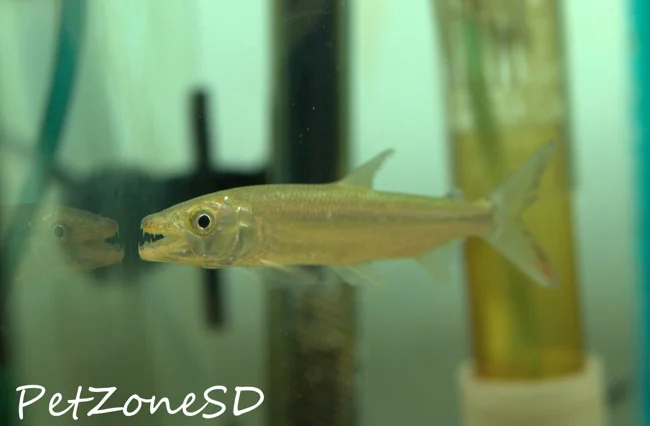
I was born!
Furthermore, goliath fry are periodically captured for sale. They haven't yet been bred in captivity, but it's a real treat to admire them in an aquarium. However, not everyone can afford to keep this bloodthirsty monster: the fish requires a minimum of 15,000 liters of tank space and access to live food. And you need to handle it with extreme care. One wrong move, and it'll decide you're much tastier than food!
Add your comment
You might be interested in:






























